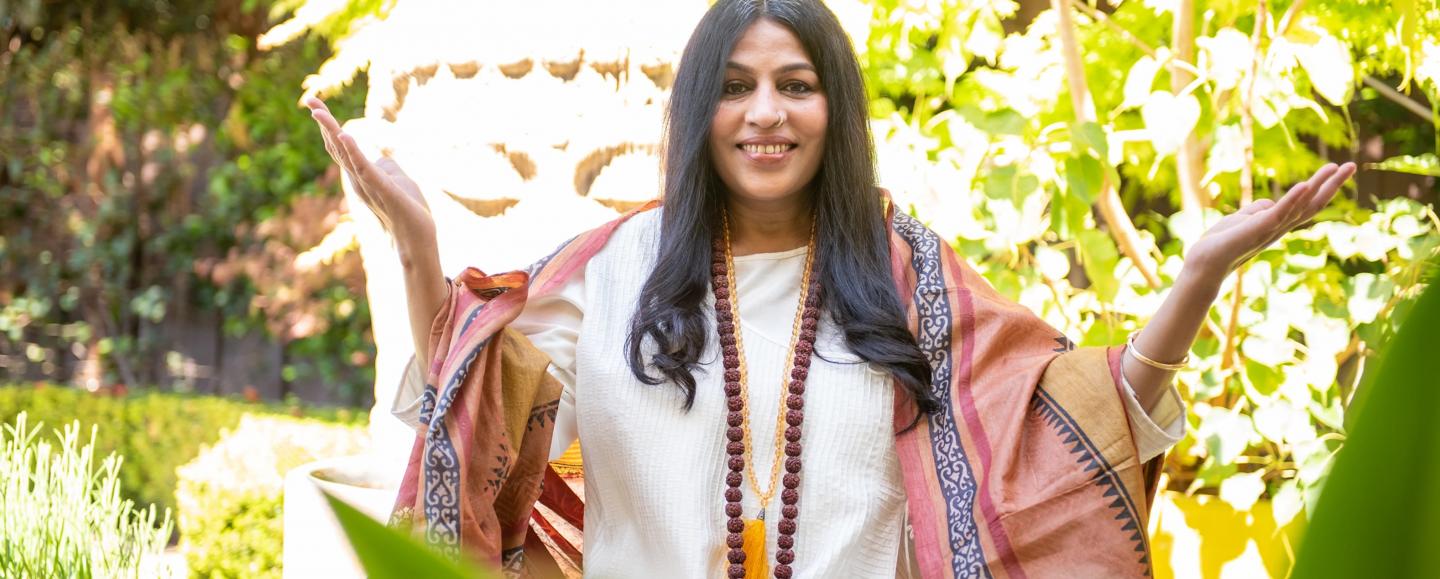The Goddess destroys adversity and suffering with her blessed anger.
—Devi Mahatmya 9.31
All humans do not view anger with the same lens. Society does not allow for everyone to embody anger equally, even when the reason is the same.
If people of a certain color or class express anger, for example, they are considered heroes of humanity, harbingers of positive change, leaders of human revolutions. But if people of another color or class or gender embody anger, they are painted in one stroke as “dangerous” to society and themselves.
For countless centuries, women in both Eastern and Western societies have been warned universally about anger. Not only is its expression considered unwomanly, but we have been conditioned to block out anger entirely from our collective awareness.
Oh, how the pundits, the so-called intellectuals, professors, teachers, and media personalities go on about women’s power of nurturance, their ability to soothe raging hearts, harmonize conflicted ideas and relationships, sacrifice for peace, suffer for good reasons, and forge a whole new path for humanity through the sheer power of placation, pacification, appeasement, overcompensation—and ultimately, their super-woman ability to keep their silence. This is all rhetoric from patriarchal institutions and those raised and bred in patriarchy, and from time immemorial religion, too, has been one of patriarchy’s greatest assets.
Dr. Harriet Lerner, author of The Dance of Anger, observes,
Even our language condemns [angry] women as “shrews,” “witches,” “bitches,” “hags,” “nags,” “man-haters,” and “castrators.” They are unloving and un-lovable. They are devoid of femininity. Certainly, you do not wish to become one of them. No wonder it takes courage to define oneself as a feminist, to risk being viewed as “one of those angry women.”
It is an interesting sidelight that our language—created and codified by men—does not have one unflattering term to describe men who vent their anger at women. Even such epithets as “bastard” and “son of a bitch” do not condemn the man, but place the blame on a woman—his mother.
The wise, gender-neutral Vedas nurture no such false qualms about anger. Anger, known as krodha in Sanskrit, is considered a divine emotion, much like joy, peace, and tranquility. It has a spiritual purpose and is meant to help us determine when our boundaries or sense of safety is being violated—physically, verbally, sexually, or emotionally. Anger is a sign that you are not satisfied with your present situation.
Healthy anger is an expression of Shakti, an empowering, activating spiritual force that rouses us from our comfort zone to renegotiate agreements and redefine expectations. Anger helps us overcome false guilt and irrational fear by unleashing momentum, strength, passion, energy, intensity, and driven behavior to move toward restoration of our sovereignty, respect, or boundaries. Anger can provide the motivation to constructively correct an injustice. It urges us to act on our inborn sense of justice.
Therefore, a short-lived experience of timely, healthy anger goes a long way. Even animals display anger when they are threatened or encroached upon. Clearly, anger has an alerting and protective function in the divine scheme of things, and rather than giving anger itself a bad rap (especially if women embody it), it is better to learn to discern between healthy and unhealthy versions of anger and to express or retrain it accordingly.
This scientifically valid approach, more than 10,000 years old, exists in Hinduism, because the Vedas teach judiciousness, never absolutism. No wonder all Hindu goddesses and gods are depicted in art and mythology as having several hands (as a symbol of their supernatural abilities). While in some hands, they hold symbols of peace, prosperity, and spiritual awakening—like the lotus flower, japa mala (prayer beads), or hold their hand raised in a “fear not, I am protecting you” gesture (mudra)—in other hands they hold weapons, like a mace, bow and arrow, or discus. They are ready to experience righteous rage and set out for battle to protect dharma. They are both constructive and destructive, able to enhance light or destroy darkness, proactively. That is why in goddess myths and hymns, Durga is often fuming and roaring with anger, like her spirit animal, the lion.
We must stop listening to the voices that say all anger is bad or evil or that it does not become women. Let go of such foolish teachings that arise from fear of women recognizing their true power.



